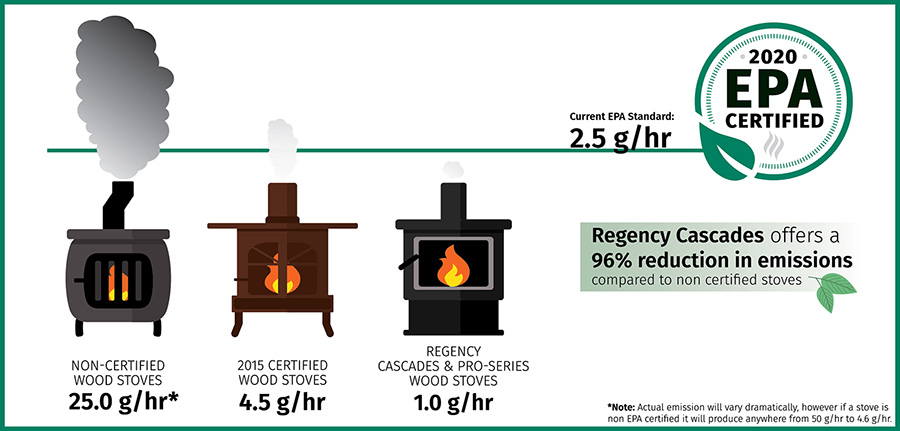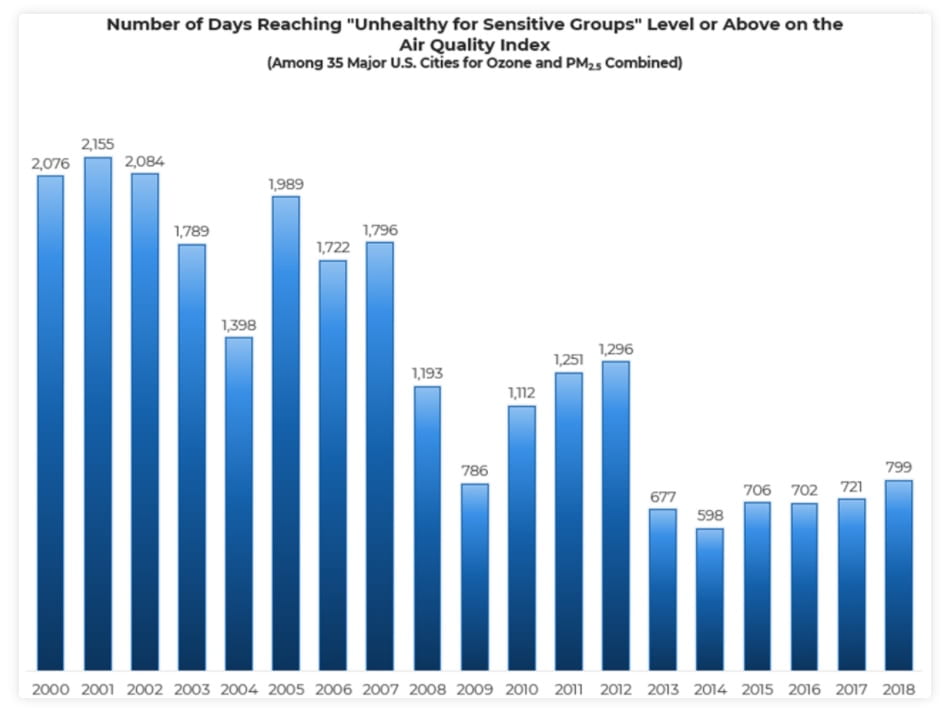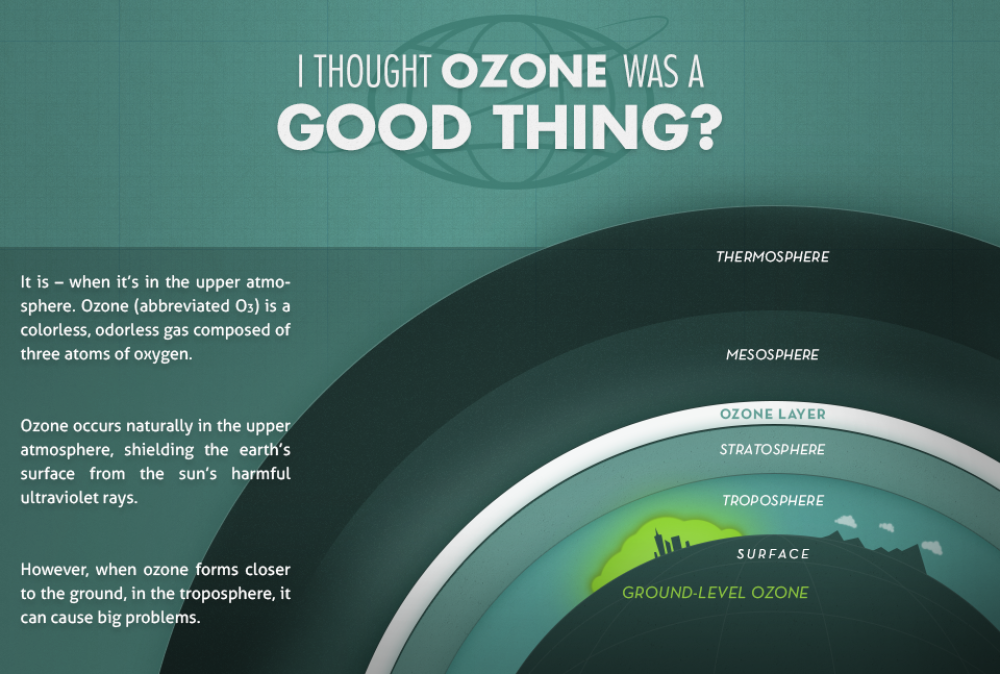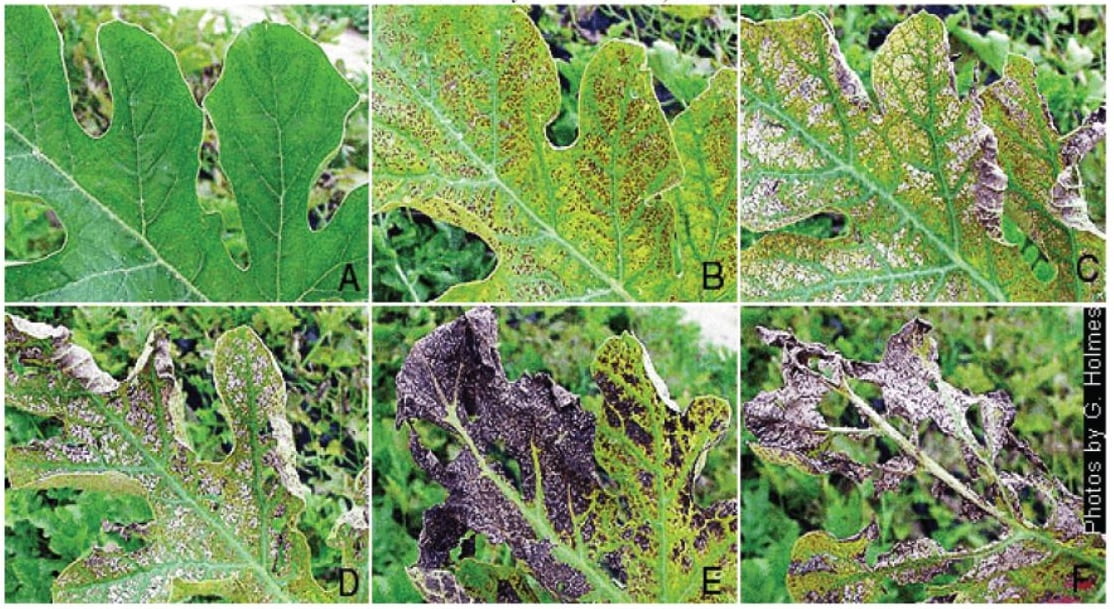From the previous post, we’ve learnt that certain control strategies have been developed in the U.S. to curb air pollution, such as the federal law of the Clean Air Act (CAA), and there has also been evidence that air quality has improved over the years. While there has indeed been some long-term improvement, can we really say the same for the short-term?
Upon closer inspection of the two graphics that I’ve highlighted in my previous post, you can see that there has actually been an increase in the national air pollutant concentration averages and an increase in the number of unhealthy days among major U.S. cities. Funnily enough, this short-term drop in standards coincided with none other than the Trump administration taking charge of the country from 2017. In fact, there is a whole LIST of the Trump administration reversing environmental rules and affecting its national parks as a result. You can view the comprehensive list over here, compiled by the New York Times, and here, arranged in chronological order by the National Parks Conservation Association.
In fact, just last month, under President Trump’s Executive Order on Promoting Energy Independence and Economic Growth, the EPA announced its final rule to gut standards needed to reduce methane and other pollution from oil and gas development. Extensive scientific evidence has shown that methane, being a potent greenhouse gas, contributes heavily to climate change that is putting national parks and the wildlife and visitors at risk. Is this not taking a step backwards in the transition to clean energy and the fight against the climate crisis to protect the health of the environment and the people?
Hence, there is clear evidence that the Trump administration has undermined and weakened some of the important rules and standards that have been put in place by the Environmental Protection Agency (EPA) to improve the country’s air quality. And yet He claims that he cares about the environment…
Image taken from BBC News
Well.. it sure doesn’t seem like it!
Till next time,
Irsyad
——————
References:
National Parks Conservation Association. 2020. Administration Guts Methane Rule, Allowing More Air Pollution To Harm National Parks And Communities. [online] Available at: <https://www.npca.org/articles/2631-administration-guts-methane-rule-allowing-more-air-pollution-to-harm>
National Parks Conservation Association. 2020. The Undoing Of Our Public Lands And National Parks. [online] Available at: <https://www.npca.org/articles/2171-the-undoing-of-our-public-lands-and-national-parks> [Accessed 12 September 2020].
National Parks Conservation Association. n.d. Trump Administration Seeks To Undermine Methane Rules. [online] Available at: <https://www.npca.org/advocacy/55-trump-administration-seeks-to-undermine-methane-rules>
Popovich, N., Albeck-Ripka, L. and Pierre-Louis, K., 2020. The Trump Administration Is Reversing 100 Environmental Rules. Here’S The Full List.. [online] Nytimes.com. Available at: <https://www.nytimes.com/interactive/2020/climate/trump-environment-rollbacks.html>
US EPA. n.d. Summary Of The Clean Air Act. [online] Available at: <https://www.epa.gov/laws-regulations/summary-clean-air-act>







